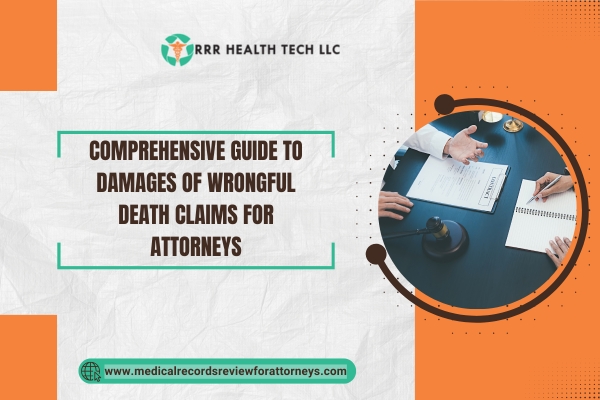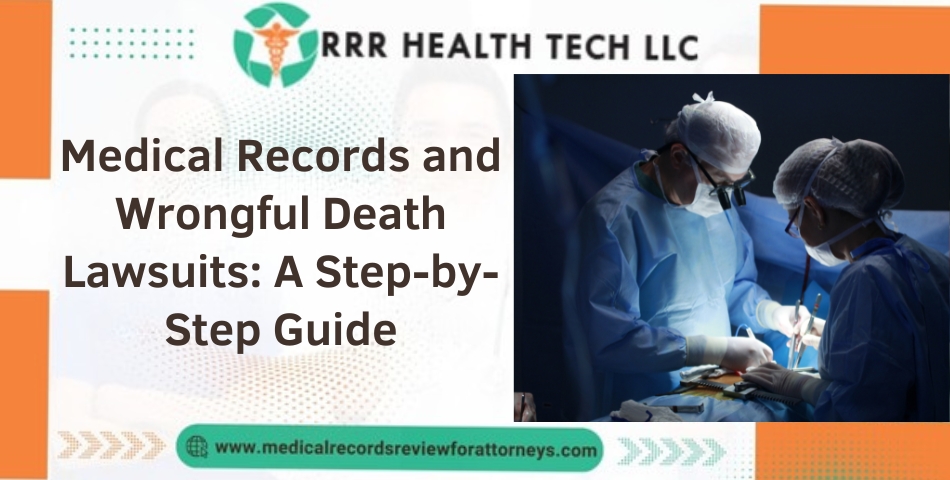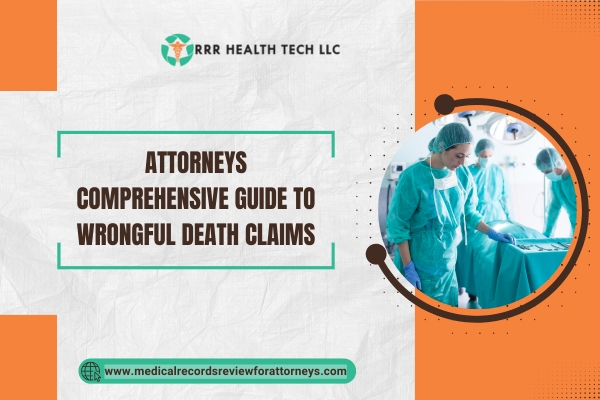
Overview
When it comes to calculating damages in wrongful death cases, there are different legal processes involved. For lawyers handling such matters, it is very important to understand the intricacies of the factors that affect damages. The aim of this article is to explain wrongful death damages with attention to how the review of medical records can legally bolster a claim.
What Are Mandated Wrongful Death Damages?
Definition and Overview
• Wrongful Death: This is a situation where someone dies due to the negligent acts of another person.
• Damages: Refers to compensation payable in monetary terms to the legal heirs of the deceased in compensation for the loss.
Classification of Damages
• Economic Damages: Any expenses that can be quantified such as medical payment, funeral expenses, and income that would have been gotten.
• Non-Economic Damages: These are losses that cannot be measured which include suffering, mental anguish, and loss due to absence or death of a close relative.
Factors Influencing Damages in a Wrongful Death Case
Factors Leading To Death
• Incident Type: How the death occurred, whether it was an accident, malpractice, or an act of violence affects the damages paid.
• A Case of Wrongful Death Liability: Determining liability is paramount in allocating damages.
Relationship to the Deceased
• Beneficiary Status: With regard to the deceased, the remaining spouse, children and parents may have separate claims depending on their specific relationship with the deceased.
• Dependency: Losing someone that one is financially dependent on can highly influence the extent of economic damages.
Jurisdictional Variations
• State Laws: Each state has its own set of rules regarding wrongful death lawsuits and they may differ in terms of damage thresholds.
• Statute of Limitations: Some time periods in which damages can be claimed may restrict the ability to file for compensation.
The Role of Medical Records Review in Wrongful Death Cases
Importance of Medical Records
• Evidence of Negligence: Medical records provide necessary proof of malpractice while also showing the level of care given.
• Establishing Causation: It assists in connecting the negligence with the death which is critical for claiming damages.
How Medical Records Review Works
• Thorough Analysis: Documents concerning the patients care are closely scrutinized to find any mistakes and gaps in treatment steps.
• Expert Testimony: In order to explain and defend the level of care given, medical professionals may be contracted to assist in interpreting the documents.
Case Studies
Case Study 1: Medical Malpractice
Overview of the Case: Correct diagnosis and treatment was not done in time resulting to the patient passing away.
Challenges: Misdiagnosis and subsequent death resulting in negligence claim while drawing a cause of death linkage had legal hurdles.
Solutions: A thorough scrutiny of the medical records indicated blatant deviations within the course of treatment.
Case Study 2: Motor Vehicle Accident
Overview of the Case: A motor vehicle accident leading to death which occurred as a result of a drunk driver’s reckless driving.
Challenges: Proving the driver’s liability and determining the emotional and financial damage sustained by the family of the deceased.
Solutions: Building a solid case utilizing medical records along with accounts from eyewitnesses.
Conclusion
For most attorneys, the reality of the damages in wrongful death cases is sophisticated and remains consistently complex. However, we also noticed that medical records review allows legal professionals to change the narrative and make a strong argument on their client’s behalf. This guide is organized in an easy format with the intent of aiding readers deal with the intricacies of wrongful death cases.


